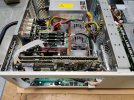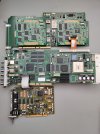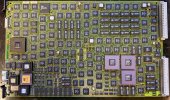Not sure if this is the correct forum, but I was having a clear out today and found a card that collectors of old and unusual GPU technologies might find interesting.
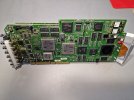
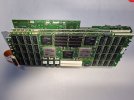
It's a PCHolly5 made by Quantel from a design originating in 2000 and was used for multi-resolution video editing.
This particular model is fitted with two picstore modules which were large video data processors. What differentiates it from modern GPUs is that it didn't work in polygons, but rather worked on the whole image, whatever the resolution happened to be, in one go.
Each module had 8 maths processors (for sizing, rotating, scaling etc), 2 matrix processors (for colour correction, keying etc) and 2GB RAM connected over a 256bit data bus.
The main PCHolly5 card had a fibre connection to six SCSI video disks (5+parity) and an audio disk.
It required a dual socket Xeon server Windows system with a PCI-X interface and a powerful PSU, I think I've got a picture somewhere.
The product line was gradually phased out as consumer GPUs became powerful enough to do the heavy lifting at a fraction of the cost, but remains an interesting bit of history.
As a sad reminder of how Moore's law used to work. Here's a functionally identical, single PicstoreE card, complete with its required 4 daughter modules, from just 3 years earlier.
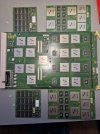


It's a PCHolly5 made by Quantel from a design originating in 2000 and was used for multi-resolution video editing.
This particular model is fitted with two picstore modules which were large video data processors. What differentiates it from modern GPUs is that it didn't work in polygons, but rather worked on the whole image, whatever the resolution happened to be, in one go.
Each module had 8 maths processors (for sizing, rotating, scaling etc), 2 matrix processors (for colour correction, keying etc) and 2GB RAM connected over a 256bit data bus.
The main PCHolly5 card had a fibre connection to six SCSI video disks (5+parity) and an audio disk.
It required a dual socket Xeon server Windows system with a PCI-X interface and a powerful PSU, I think I've got a picture somewhere.
The product line was gradually phased out as consumer GPUs became powerful enough to do the heavy lifting at a fraction of the cost, but remains an interesting bit of history.
As a sad reminder of how Moore's law used to work. Here's a functionally identical, single PicstoreE card, complete with its required 4 daughter modules, from just 3 years earlier.


